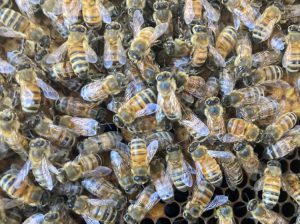Same concentration, different outcome: understanding variability in varroa mite treatments
-
By: Véto-Pharma
Table of contents
- 1. A higher concentration does not guarantee greater efficacy
- 2. Identical concentration, divergent bee mortality rates
- 3. Understanding the pharmacokinetics and pharmacodynamics
- 4. The impact of residues on bee well-being and resistance development
- Key points to remember
- Miticide Resistance: Inevitable Fate or Manageable Risk?
- How to reduce the Impact of Residues when fighting against Varroa
- Varroa Guide – North America version
The relentless assault of Varroa destructor infestations on honey bee colonies is a global concern, propelling a race towards new pharmaceutical interventions.1 While conventional wisdom often emphasizes medication concentration as the linchpin of treatment success, the reality is far more nuanced.
A myriad of interplaying factors – from pharmacokinetics and pharmacodynamics to the delicate balance of bee and varroa biology – converge to shape treatment outcomes.
Additionally, the potential impacts of increasing medication concentrations on bee health are significant, ranging from immediate effects such as bee mortality to long-term consequences2, including changes to gut microbiota, and cognitive abilities like olfactory learning and memory.3,4 Furthermore, increasing the concentration may result in higher residue levels in bee colonies, which can have serious consequences, including the potential development of resistance to the active ingredient.
To access the complete article go to; Same concentration, different outcome: understanding variability in varroa mite treatments – Veto Pharma Blog (blog-veto-pharma.com)







